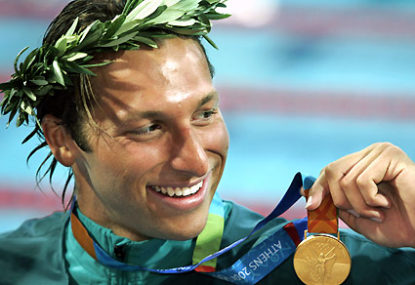JackJumpers' NBL title was special - but where does it sit among Tasmania’s top ten sporting moments?
It’s a pretty good time to be a Tasmanian sports fan right now. After years in the sporting wilderness with not much to celebrate,…

Australian swimming’s doing just fine thanks, despite last week’s media-managed mea culpa by late night door-knockers and pill-poppers.
Just fine, that is, for a long privileged marquee sport in the shadow of the wrecking ball of sporting globalisation.
Let’s face it. The whole world – even Africa – is inching toward mass middle class consumerism, an egalitarian outcome Karl Marx could only have dreamt about.
Middle class means personal and corporate propriety, accountable governance, humane but routine work hours and ‘helicopter parents’ micromanaging their kids’ leisure time.
Nothing thrives in this hot house of upward mobility like swimming.
Witness the recent rise in the swimming stocks of almost every European nation from the Baltic to the Bosporus, as well as Japan, China and Brazil. Even Tunisia and Surinam have their Olympic swimming champions.
For years now, kids from Hong Kong and Singapore have been entering the various Australian state swimming titles and not merely being competitive, but absolutely creaming us in some age groups.
At the last Queensland titles, there was even a youth team from Thailand.
In short, United Nations demographers no longer need to apply all sorts of UNESCO statistics to ascertain a developing economy’s status. They need only ask how many swimming squads they have.
None of this is an excuse for the plainly boorish behaviour of our male Olympic representatives who are supposedly aware that their corporate and government support hangs on a drip-tube called public image.
It is just an elucidation of the writing on the wall that has been wistfully ignored for decades now.
For half a century Australians have been complacent about the degree of government sponsorship in swimming. Not just the recent largesse of the federal purse, but via the historical peppercorn admission prices of local government pools in almost every town with a few hundred souls.
But in the recent decades, as our pools have needed upgrading and even replacing, municipalities have had to ‘get real’ under the user-pays system to stem the traditional haemorrhage of operating costs.
New community expectations of ‘leisure centre’ standards incorporating slides and water-spitting T-Rex sculptues have further eroded the ‘eight lanes, four walls’ entitlement of swim clubs.
Yet even under this pressure, our pool entry costs are often less than half of those overseas. This can’t last much longer.
Which raises the question: where will our swim team rank in decades hence?
Well, get your calculator out and key in the population of every country on earth with an average GDP over, say $30,000 p.a.
Then divide that aggregate by ours and you have our share of future Olympic medals.
In the meantime, we are still milking the momentum and prestige of an historically privileged sport.
Ironically, the stiffest challenges to our dominance are coming from frigid climes once deemed unlikely to harbour swimming champions.
It is in those snowbound and icy suburbs that the vast majority of heated, all-year pools are now being built.
In regional Australia – the nursery of many of our great swimmers – heating the local lanes is often beset with vested opposition.
What this all means is that while we may yet come up with the odd overnight world record holder, there will be fewer and fewer Thorpes, Hacketts, Perkins, Goulds etc. Call it the ‘tennis-isation’ of Australian swimming if you like.
Whether heads will roll after recent reports damning our London effort is debatable. The big question is whether anybody near the top realises just how vulnerable to political scrutiny and constituent resentment their funding is.